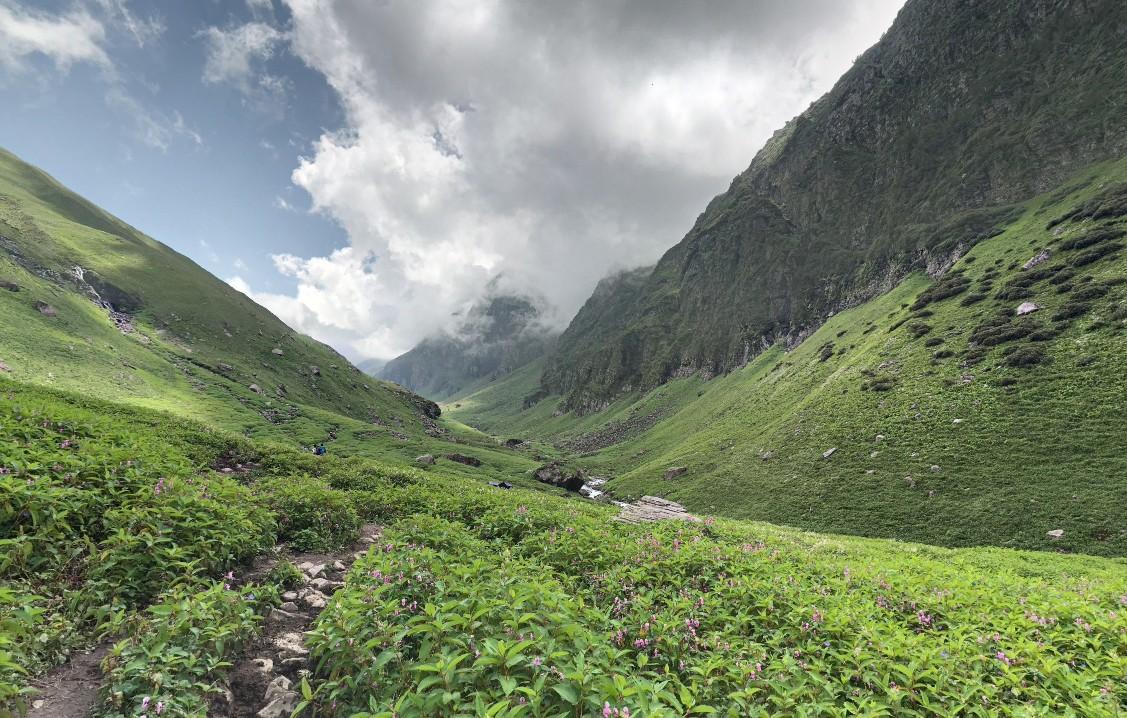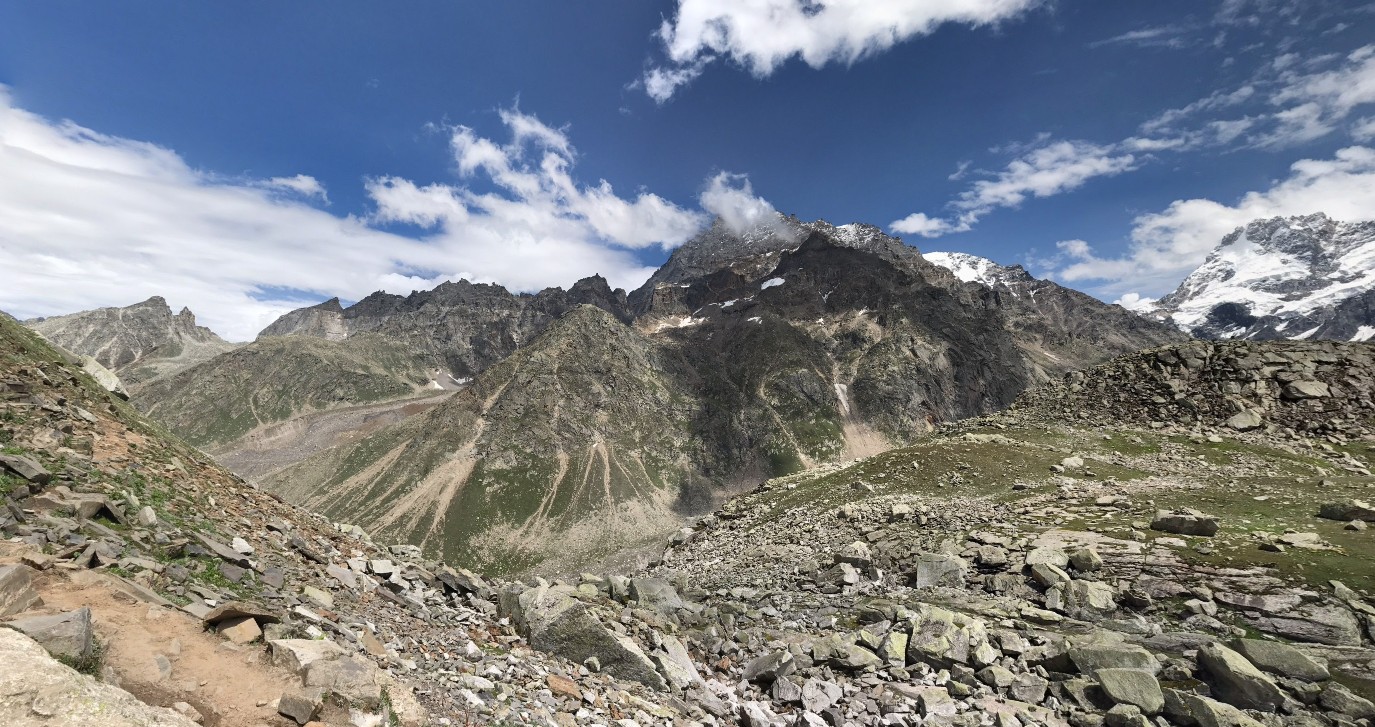Notifications

11 minutes, 41 seconds
-4 Views 0 Comments 0 Likes 0 Reviews

The Hampta Pass Trek is one of the best beginner-friendly treks in Himachal Pradesh. It offers an unforgettable mix of beautiful landscapes, moderate difficulty, and the added bonus of visiting Chandratal Lake at the end. Whether you are a first-time trekker or an experienced mountain lover, this trek will give you a unique experience that combines the beauty of the Kullu Valley with the rugged terrain of the Spiti region.
The Hampta Pass Trek is located in the Pir Panjal range of the Himalayas in Himachal Pradesh. The trek starts from Jobra, a small village near Manali, and ends at Chhatru in the Spiti Valley. The trail connects the green, forested Kullu Valley to the dry and desert-like Lahaul and Spiti Valley. The pass itself lies at an altitude of around 14,100 feet (4,300 meters) and offers stunning views of the surrounding mountains and valleys.

The best time to do the Hampta Pass Trek is between mid-June and late September. During this time, the snow at the high pass starts to melt, the rivers are easier to cross, and the weather is more stable. June and early July offer snow-covered trails which many trekkers enjoy. August brings green meadows and blooming wildflowers. September is known for clear skies and post-monsoon freshness, making it ideal for photography and clean views.
Avoid going in early June if the snow is too heavy or after September when temperatures drop quickly and roads may close due to early snowfall.
Hampta Pass Trek is your perfect 4-5 days Himalayan break – complete with alpine forests, high passes, stream crossings, and a visit to the beautiful Chandratal Lake.
The Hampta Pass Trek is usually completed in 5 to 6 days. The total distance covered is around 25 to 28 kilometers, depending on the route and side visits like Chandratal Lake. The trek is considered moderate in difficulty, which makes it suitable for beginners with basic fitness and enthusiasm for the outdoors.
You will be trekking for around 4 to 9 hours each day, covering a variety of terrain such as forests, rivers, boulders, and snow patches. No prior trekking experience is required, but physical preparation like walking, jogging, or climbing stairs can help.
Start the journey with a short drive from Manali to Jobra (9,800 feet). From Jobra, begin the trek to Chika, the first campsite. It is a light trek of around 2 to 3 hours through pine, maple, and birch forests. The trail runs alongside the Rani Nallah stream. Chika is a scenic open meadow surrounded by tall rock faces and hills.
The second day of the Hampta Pass Trek involves a steady uphill walk through meadows filled with wildflowers. The trail crosses streams and leads to Balu Ka Ghera, which means ‘heap of sand’ and is believed to be a bear’s resting spot. This campsite is cold and windy and sits at the base of the Hampta Pass. The trekking distance is around 5 to 6 hours.
This is the most challenging and rewarding day of the trek. You will start early and climb steep slopes to reach the top of the Hampta Pass (14,100 feet). The climb takes around 3 to 4 hours, and the descent to Shea Goru takes another 3 to 4 hours. At the top, enjoy a panoramic view of snow-capped peaks, deep valleys, and glacier basins. The descent is steep, rocky, and sometimes slippery, especially if there is leftover snow.
This day is mostly downhill. The trail goes through cold deserts and rocky paths, taking around 4 to 5 hours to reach Chhatru. From here, if the roads are open, you can drive to Chandratal Lake, a beautiful high-altitude lake known for its crystal clear water and peaceful surroundings. The drive takes about 3 to 4 hours, and you can camp near the lake or drive back to Chhatru for the night.
If you stayed in Chhatru the previous night, drive to Chandratal Lake early in the morning. Spend time at the lake, take photos, and enjoy the silence. Then begin the long drive back to Manali via the Atal Tunnel or Rohtang Pass depending on weather and road conditions. The return journey takes around 7 to 8 hours.
Great for Beginners: The Hampta Pass Trek is a good starting point for new trekkers. It gives you a feel of high-altitude trekking without being too hard.
Diverse Landscapes: You get to see green valleys, snowy passes, rocky deserts, and glacial rivers all in one trek.
Chandratal Lake: The visit to Chandratal makes the trek extra special. It is a quiet and surreal place, perfect for relaxation and reflection after a challenging hike.
Adventure and Safety: The trek includes river crossings, camping, and high-altitude climbs, but it is still considered safe with experienced guides.
Packing smart is key. Here's a checklist:
Warm clothes (thermal wear, fleece, padded jacket)
Trekking shoes (with ankle support)
Rain gear (poncho or rain jacket)
Water bottles and snacks
Hat, gloves, sunglasses, and sunscreen
Sleeping bag (if not provided)
Trekking pole (optional but helpful)
Personal medication and hygiene kit
Keep your backpack light but don’t miss the essentials.
Acclimatize properly in Manali for at least a day before starting the trek.
Stay hydrated and eat energy-rich food.
Follow your trek leader’s advice at all times.
Avoid alcohol and smoking before and during the trek.
Respect nature and do not litter on the trail.
Yes, the Hampta Pass Trek is one of the best treks for beginners in the Himalayas. It does not require any prior trekking experience. However, basic physical fitness and the ability to walk for 5 to 6 hours a day are necessary.
The total trekking distance is approximately 25 to 28 kilometers, depending on the route and whether you include the visit to Chandratal Lake.
The highest point of the trek is Hampta Pass, which is located at an altitude of around 14,100 feet (4,300 meters) above sea level.
The trek is rated as moderate. It involves some steep climbs and long walking days, but it is manageable for anyone in average health. Proper acclimatization and preparation are key.
Yes, visiting Chandratal Lake is a common and beautiful addition to the trek. However, it depends on road conditions and weather. The road from Chhatru to Chandratal is often open between late June and mid-September.
While it is possible to do the trek solo, it is highly recommended to go with a certified trekking group or guide, especially for first-timers. The trail includes river crossings and remote areas where local guidance is helpful and ensures safety.
The weather during the trek can vary from sunny to rainy and even snowy near the pass. Day temperatures range from 12°C to 20°C, while night temperatures can drop to -2°C to 5°C, especially at higher campsites like Balu Ka Ghera and Shea Goru.
Yes, trekkers need permits and forest entry passes, which are usually arranged by trekking organizers. If you're trekking independently, you must obtain these from the forest department office in Manali.
Accommodation during the trek is in tents, which are usually set up at designated campsites like Chika, Balu Ka Ghera, Shea Goru, and Chhatru. Trekking companies provide tents, sleeping bags, and mats.
Mobile signal is available only until Jobra. After that, the network becomes very weak or unavailable for the rest of the trek. It's best to inform your contacts before starting and keep your phone for photos or emergency use.

